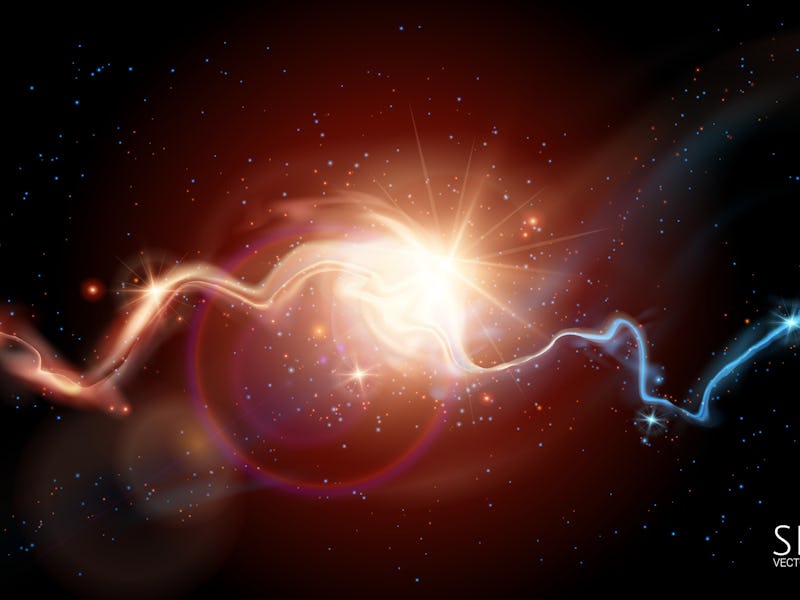Dark matter fueled the first stars in the universe — new study
Dark matter is incredibly boring, but maybe that wasn’t always the case

Dark matter doesn’t really do much of anything in the present-day universe. But in the early days of the cosmos, there may have been pockets of dark matter with high enough density that they provided a source of heat for newly forming stars. Welcome to the strange and wonderful world of “dark stars.”
A Dance of Dark Matter
The simplest models of dark matter are incredibly boring. It just… sits there, gravitating. We only know of its existence through its subtle gravitational influence on galaxies and larger structures in the universe. It doesn’t interact with light, with ordinary matter, or even with itself. At this very moment, you might be swimming in a vast sea of dark matter particles, and you wouldn’t even know it.
But this simplistic picture of dark matter has a few issues. When astrophysicists perform computer simulations of the formation of galaxies, including dark matter, they find that if the dark matter particles are too boring, then it doesn’t quite match up with reality. The cores of galaxies become much denser than we observe, and typical galaxies have way too many satellites than we see.
So maybe dark matter is just a little bit complicated. Maybe it still doesn’t interact with light or with ordinary matter, but perhaps it sometimes interacts with itself. That self-interaction can’t be too strong; however, otherwise, the dark matter would’ve clumped up into tiny little balls or just annihilated itself long ago.
This “interact but not very much” hypothesis makes it challenging for astronomers to come up with ways to test the scenario. Thankfully, astronomers are very clever people.
Dark Matter: The Young and the Darkness
The extremely early universe, when it was only a couple hundred million years old, was very different than today. For one, it was a lot denser, with all the material of the cosmos crammed into a much smaller volume. Second, it was a lot darker because stars and galaxies had not yet formed.
Back then, the universe was composed of dark matter (whatever is it) and neutral hydrogen and helium. Slowly, over the course of eons, all that material began to gravitationally collapse, forming ever larger structures. The first protostars started as dense clumps no bigger than a thousandth the size of the Sun. In the traditional picture of the formation of the first stars, those clumps steadily grew to behemoths a hundred times the size of the Sun, powered by nuclear fusion in their cores.
Early stars were made solely of hydrogen and helium.
But a team of astrophysicists has realized that the traditional story might be different, as they reported in a new paper recently appearing in the preprint journal arXiv. If dark matter does interact with itself, then when the dark matter particles collide, they release a little bit of energy. Each collision doesn’t produce much, but in the early days of the universe, the sites of star formation may have had high enough densities for annihilating dark matter to be a major player.
In this scenario, the first stars are not powered by nuclear fusion but instead by annihilating dark matter in their cores. The research team calls them “dark stars,” even though the stars themselves are still made of mostly normal matter. These stars don’t exist in the modern universe because the densities of dark matter are too low, so we can’t see them in the galaxy today.
But the researchers hope that the James Webb Space Telescope, specifically designed to study the early universe and the formation of the first stars, might be able to see these dark stars directly.
This article was originally published on Universe Today by Paul M. Sutter. Read the original article here.
This article was originally published on